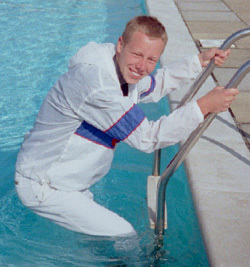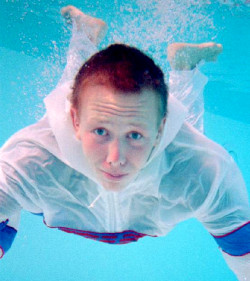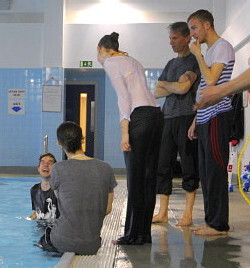Lifesaving Lesson Structure
In our lesson plans we group items using progressive skill building. You'll find them in the main chapters above.
Using a modular approach to lesson planning maximises each swimmer's opportunity to experience success and receive recognition. The teacher should plan to maximize each swimmer's opportunity to successfully complete at least one or more individual modules over the course of the lesson set.
Content Grouping
After an introduction of any subjects, they can be combined to maximize practice and effective time management. Related skills can be taught, practised and evaluated together.
For instance, dry items such as resuscitation skills could be grouped together at the beginning of each lesson. Surface dives can be combined with underwater swims, lane swimming can be combined with rescues.
Have equipment such as ropes, buoys, and resuscitation manikins ready before the lesson begins.
Tell - Show - Try - Do
Demonstrate the skills clearly and effectively, so that the students can understand what they need to do. Tell them what the skill is about, go into the water to show the skill, them let them try it until they can do it themselves. Provide feedback and guidance to the students as they practice the skills.
Tell your class how to do a skill.
Explain it in small steps with sufficient detail.
Show them the skill.
Give a clear demonstration, on land and in water.
Let them try it out.
Make sure they do it right.
Finally they can do it.
Let them practice it for a while.

Go into the water and explain the new swimming skill.

Demonstate it in the pool.

Let your class try and do.
Incorporate Emergency Scenarios
Incorporate emergency scenarios into the lessons, so that the students can learn how to respond in real-life situations. For example, they could simulate a situation where a student falls into the water fully clothed and teach them how to swim to safety.
Practice Survival Swimming Strokes
Teachers teach the students how to swim using survival strokes, which are designed to help them stay afloat and conserve energy in the water.
Also teach them how to swim fully clothed and with shoes on, as this is more realistic and can help them be better prepared for emergencies.
Selecting Equipment
On some pages of this website we include recommendations for equipment you may need during the teaching and practice activities. Identify all required equipment and incorporate it into your lesson plans.
Arrange to have all the equipment ready at the beginning of the lesson to minimize the time spent organizing equipment during the lesson.
If you share equipment with another instructor, consider how you will fit this into the lesson plan and agree on a location for the equipment that will provide quick access for both classes.
It may be necessary to adapt equipment or select alternative equipment in order to achieve the required outcomes.
Plan and prepare for this before the lesson.
Time Management
The successful teacher will use careful planning, lesson preparation and attention to time management. This gives class members the maximum opportunity to successfully learn and practice the required items.
A key time management practice is to use the same methods and routines every time for a given activity. Make sure your class members know them. This will minimize the time needed to use organize your group for the activity and maximize the practice time.
As you use your short term lesson plans, add notes that show the methods and routines you've used for the activity.
This will help you plan for the next lifesaving class.
Track Progress and Attendance
Throughout the lesson set you will need to track the progress of your class members. This helps you measure individual progress, give feedback, and pace your team.
Use a worksheet to record the items accomplished by each class member and to track the progress of skills and swimming efficiency. You may need additional space to record notes about class member progress.
If participants miss out on lessons it is not easy to catch up as the class has moved on.
Only if you have time for frequent repetitions to better remember things,
might it be possible to catch up.
Practice and Develop Efficiency
After a skill has been introduced, your goal is to maximize the amount of practice your class has to master the skill.
When a basic skill is accomplished, drills and progressions should be used to help each class member become more efficient with the skill.
Use the stroke drills and progressions with interval training sets
to help your class members develop a sense of pace.
This improves swimming efficiency to meet and
exceed the swimming distances and times for the lifesaving swimming and fitness items.